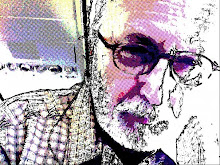Breaking point
 Just to be up front, I haven't reached mine. In fact, that's one reason I've ignored this soapbox for some time. My feelings about this subject are in flux.
Just to be up front, I haven't reached mine. In fact, that's one reason I've ignored this soapbox for some time. My feelings about this subject are in flux.The way we perceive art, and assign value to the work of artists, is changing so rapidly and dramatically. The network effects of social media, have created a sea-change far beyond anything Shakespeare might have imagined when he delivered those words from the lips of Ariel in The Tempest. The bard could only reach those within the sound of his voice, or the reach of ink on paper, passed hand to hand.
Today, an image of Lizz Wright, captured at the Century Ballroom in Seattle, can mingle (or in this case, tumbl) with her music and the melancholy poetry of a young man who thinks he has reached his breaking point.
I hope the anonymous young man isn't anywhere near broken. Shift happens. Shakespeare would be stunned. But I still feel the relationship between artists and their work should be revealed. He connected this image of Lizz to his feelings, and his feelings to her music - because listening is free - so I'm connecting them to me. I took that. And, actually, I prefer the other image I shared from her performance. But, then, there's another man in picture.
